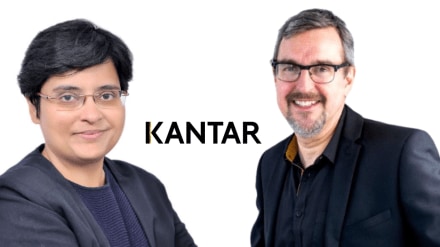Graham Staplehurst, global strategy director, BrandZ Kantar and Soumya Mohanty, managing director & chief solutions officer, South Asia for Kantar discuss key findings and learnings for Indian brands from this year’s top 100 brands.
We’ve seen brands like HDFC Bank, TCS and Airtel consistently at the top in the last few years. What lessons do they offer newcomers on the list?
Mohanty: Our top 10 have been quite consistent over the years. Both BFSI and B2B tech categories in fact have had tailwinds for some time and strong category salience working in their favour. HDFC has been consistent in its branding, its use of influencers in banking safety messaging and a positive brand tone. While it is at the number two spot, TCS has lost a bit of value and Infosys hasn’t gained value this year, and we know the reasons for this with the volatility with clients in the US and the disruption with AI. This sector will need some serious innovation if it has to continue to grow. Airtel on the other hand has been the fastest growing among the top 10, at 38%, benefiting from 5G and with better customer service.
Staplehurst: Indian brands like HDFC, Infosys and Airtel have also been featured in the global 100 brand ranking that we released in May this year. Airtel has probably been doing better than most telecom brands around the world right now. It has been building a meaningful and different brand, not just in India but also in markets like Africa.
This time, we have seen India’s top 100 brands record a slower growth in value at just 6%. Why is that?
Mohanty: We saw consumption slow down last year in the second half and there has been an erosion in meaningful difference among Indian brands. The real value of consumer equity has come into play. We cannot stress enough the need for brands to create a meaningful difference. Brand equity is what keeps brand value from eroding especially in tough economic situations. That is also what happened during the pandemic. Mass consumer brands need to tap the growth headroom in rural markets. Brands like Meesho have done that well. In the auto sector too, we have seen brands like Mahindra, TVS and Royal Enfield do disproportionately well in comparison with others in the category. That’s the result of years of brand building.
What can Indian leaders learn from the top global brands?
Staplehurst: if you look for parallels between Indian leaders and global ones, you would recognise that financial services have been very strong. But we’re also seeing brands like MakeMyTrip performing well in India and globally we have seen the same happen for Booking.com. These brands have shown us where the future is, by finding out where they fit in the customer’s lives, and by using AI to take the meaningful differentiation they have created into the future. That’s a challenge that many established brands face – how do they adapt to an increasingly technological future? Will they be disrupted or will they be able to use technology to maintain their relevance?
Like India, have the global brands seen an erosion in brand value?
Staplehurst: The growth for the top 100 has been 29%, which is about the same as the previous year. The global 100 features technology and platform brands such as Meta, Google, Apple, and Amazon that have a huge value.
Mohanty: India doesn’t have those kinds of brands. Our leading brands are BFSI, which form around 27-28% of the total top 100 brands. The other key categories have been B2B tech that is very challenged at the moment, followed by telecom. FMCG has seen serious challenges not just in India but globally too. But with GST relief in play now, there is a lot of headroom for FMCG in India to grow, which is not the case with other markets around the world. These brands need to focus on building consumer equity.
With technology and AI changing brand engagement, what will legacy brands need to do to keep growing?
Mohanty: When consumer choices are fragmenting, it is imperative for larger brands to consistently innovate and invest in brand building. Many brands today are getting built on social or digital platforms. The challenge for legacy brands is to adapt to the agile, new-age brands. Having said that, among the D2C brands, there are too many brands that are looking alike and have been unable to create differentiation. They are often unable to scale up beyond a point. The consumer is offline and online, and companies need to find a way to create culturally resonant storytelling across touchpoints wherever the consumer is, by leveraging the best available medium.
Staplehurst: Instagram was one of our top global brands this year, which only indicates how advertisers are shifting their dollars into influencer marketing. As marketing has so many more opportunities, consistency becomes really important to stay differentiated. A lot of times marketing is really all about reminding consumers about what they already know about the brand and staying true to the core brand purpose and values. So, large consumer brands especially need to stay consistent in their messaging.
